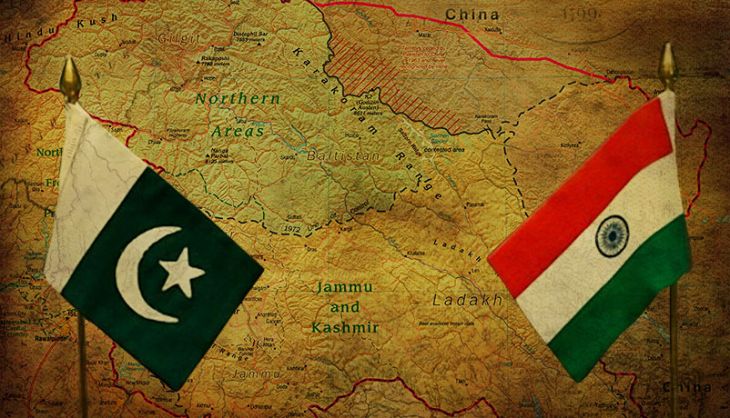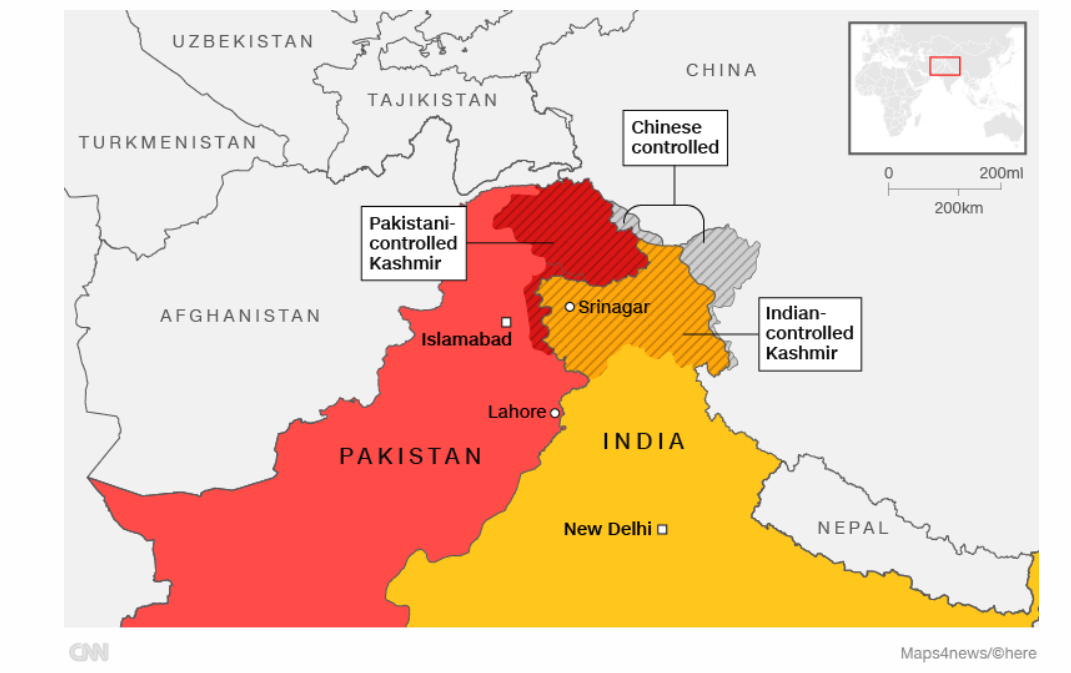The Kashmir Dispute: India and Pakistan’s Tension
The Kashmir Dispute: India and Pakistan’s Tension the Kashmir dispute India Pakistan conflict is one of the most protracted and contentious territorial disputes in modern history. The region of Kashmir, nestled in the northern part of the Indian subcontinent, has been a focal point of tension between India and Pakistan since the two countries gained independence in 1947. What began as a political dispute has, over the decades, evolved into a multifaceted issue involving military confrontations, diplomatic challenges, and significant human suffering. Understanding the roots of this dispute, its evolution, and its current status is essential for grasping the broader dynamics of South Asian geopolitics.

The Origins of the Kashmir Dispute
To comprehend the ongoing Kashmir dispute India Pakistan tension, one must trace the historical origins of the conflict. Kashmir, a princely state ruled by Maharaja Hari Singh, was one of the largest and most strategically important of these territories.
The region’s geographic location, nestled between India, Pakistan, and China, made it a highly coveted area. The initial decision by the Maharaja to remain neutral in the face of the partition soon became untenable when tribal forces, supported by Pakistan, invaded Kashmir in 1947. Faced with a dire military situation, the Maharaja sought India’s assistance, agreeing to accede to India in return. The move, which involved signing the Instrument of Accession, was not accepted by Pakistan, leading to the first war between the two countries.
The First War and the United Nations’ Involvement
The first India-Pakistan war (1947-1948) resulted in a ceasefire brokered by the United Nations, which established the Line of Control (LoC), effectively dividing Kashmir into two parts: one controlled by India and the other by Pakistan. However, the root cause of the Kashmir dispute India Pakistan—the question of whether Kashmir should be part of India or Pakistan—remained unresolved.
The UN resolution called for a plebiscite, which would allow the people of Kashmir to decide their fate, but this never materialized. Both India and Pakistan held deeply divergent views on the plebiscite, and as the years passed, the situation became more entrenched.
The Role of Geopolitics and Nationalism
In the decades following the first war, the Kashmir dispute India Pakistan became increasingly entangled with nationalist movements and the larger geopolitics of the region. India, a secular democracy, positioned itself as the defender of Kashmiri Muslims’ rights, while Pakistan, a Muslim-majority state, argued that the region should naturally be part of Pakistan. This ideological divide was amplified by the rise of nationalistic movements in both countries, each determined to assert its own version of historical justice.
For Pakistan, the dispute was a matter of national identity and a rallying cry for its citizens. The loss of Kashmir, a Muslim-majority region, was seen as a profound injustice, which Pakistan could not accept. India, on the other hand, viewed the accession of Kashmir as legitimate, citing the Maharaja’s decision to join India and the subsequent Indian military intervention as binding.
The Wars of 1965 and 1971: Escalation and Diplomacy
The Kashmir dispute India Pakistan escalated again in 1965 when Pakistan launched Operation Gibraltar, aimed at infiltrating forces into Jammu and Kashmir to incite insurgency. This provoked India into a full-scale military response, leading to the second India-Pakistan war. The conflict ended in a stalemate, with both sides agreeing to a ceasefire brokered by the Soviet Union and the United States. Despite the peace agreement, the core issue—the status of Kashmir—remained unresolved.
The 1971 war, however, was a different chapter altogether. The conflict was primarily centered around East Pakistan (now Bangladesh), but the implications for Kashmir were significant. India’s victory in this war led to the creation of Bangladesh, and it also marked a shift in India’s military capabilities and its resolve to protect its territorial integrity. In the aftermath of the war, both countries began to realize the devastating potential of further conflict, but the Kashmir dispute India Pakistan continued to simmer beneath the surface.
The Nuclear Factor and the Changing Dynamics
By the 1990s, the Kashmir issue had reached a new stage, particularly with the nuclearization of South Asia. Both India and Pakistan had developed nuclear weapons, making the stakes of any military confrontation over Kashmir far higher. The nuclear deterrent raised the prospect of full-scale warfare, making any conflict over Kashmir not only a regional issue but one with global implications.
Despite the looming threat of nuclear war, both nations continued to engage in skirmishes along the Line of Control. The Kargil War in 1999, which saw Pakistani forces infiltrating Indian-controlled territory in Kashmir, was a particularly intense episode. The war ended with Indian military success, but it underscored the precarious nature of the Kashmir dispute India Pakistan. The international community, particularly the United States, played a significant role in pushing both sides to de-escalate, but the tensions over Kashmir were far from resolved.
The Role of Militancy and Terrorism
One of the most complex and tragic aspects of the Kashmir dispute India Pakistan has been the rise of militancy and insurgency in the region. In the late 1980s and early 1990s, Kashmir witnessed an upsurge in armed insurgency, with local separatist groups and militants demanding independence or joining Pakistan. These groups were fueled by local grievances, the harsh Indian military presence, and the broader geopolitical situation.
Pakistan, despite officially denying it, provided support to these militant groups, which further exacerbated the conflict. The insurgency and subsequent counter-insurgency operations by Indian forces led to significant civilian casualties, widespread human rights abuses, and a growing alienation of the Kashmiri population from the Indian state. The Kashmir valley became a hotbed of violence, and the region continues to be a source of immense human suffering.
The 21st Century: Diplomatic Efforts and Continuing Strife
In the 21st century, the Kashmir dispute India Pakistan has witnessed both diplomatic efforts and continued conflict. Several attempts at dialogue, such as the Agra Summit in 2001 and the Lahore Declaration in 1999, were initially promising but ultimately failed due to mutual distrust and the escalating violence in Kashmir.
The situation worsened in August 2019 when India, under Prime Minister Narendra Modi, revoked the special status of Jammu and Kashmir by abrogating Article 370 of the Indian Constitution. This move, which removed the region’s autonomy, was met with widespread protests, not only in Kashmir but also internationally. Pakistan strongly condemned the decision, further straining relations between the two nations. The revocation of Article 370 also sparked fears of demographic changes in the region, which could alter the balance of power in the disputed area.
The international community has largely been unable to mediate a resolution, with major powers such as the United States and China remaining largely neutral, though some countries have occasionally voiced concerns. The rise of right-wing nationalism in both India and Pakistan has further complicated prospects for peace, as political leaders use the Kashmir issue to rally domestic support.
The Humanitarian Impact
The human cost of the Kashmir dispute India Pakistan is staggering. The people of Kashmir have borne the brunt of the conflict for decades. The displacement of thousands of families, the loss of life, and the disruption of daily activities have created a deeply fractured society.
Human rights organizations have frequently documented abuses, including extrajudicial killings, enforced disappearances, and torture. The region’s children, in particular, have faced enormous psychological and physical challenges, with many growing up in an environment of violence and instability.
The Kashmir dispute India Pakistan is not merely a territorial conflict but a deep-seated ideological and emotional struggle. The roots of the dispute lie in the legacy of partition, the aspirations of the Kashmiri people, and the competing national identities of India and Pakistan. While the situation has evolved over time, the core issues of sovereignty, self-determination, and territorial integrity remain unresolved.
As the world watches, the Kashmir conflict continues to shape the relationship between India and Pakistan, influencing regional security, international diplomacy, and the lives of millions of people. The path to peace in Kashmir remains elusive, but any lasting solution will require a nuanced approach that addresses the aspirations of the Kashmiri people, the security concerns of both India and Pakistan, and the broader geopolitical realities of the region. Until such a solution is found, the Kashmir dispute India Pakistan will remain a poignant reminder of the complexity and challenges of resolving deeply entrenched conflicts.


